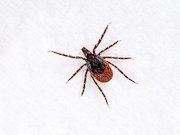(HealthDay)—Fewer U.S. kids are plagued by tooth cavities compared to just a few years ago, but income disparities persist, according to a new U.S. government study.
Researchers found that in 2015-2016, about 43 percent of children ages 2 to 19 had cavities. That was down from 50 percent four years earlier.
This is the good news. On the other hand, disparities were apparent: Hispanic kids had the highest prevalence of cavities, at 52 percent. And children from lower-income families had a substantially higher rate of cavities than those from wealthier families.
In addition, many kids—13 percent—had cavities that had gone untreated, and black children were at greatest risk.
“We’re making progress, but there’s still work to be done,” said lead researcher Dr. Eleanor Fleming, of the U.S. Centers for Disease Control and Prevention’s National Center for Health Statistics.
Dr. Rosie Roldan, who directs pediatric dentistry at Nicklaus Children’s Hospital in Miami, agreed.
“It’s encouraging to see this decline happening,” said Roldan, who was not involved in the study.
She noted that the youngest children in the study—those ages 2 to 5—had the lowest rates of cavities and untreated cavities.
That, according to Roldan, might be related to a push in recent years to get young children to the dentist.
Groups including the American Academy of Pediatrics and the American Dental Association suggest children start dental care when their baby teeth emerge, or by 12 months of age.
On the other hand, Roldan said, “cavities are still very common.”
Lower-income families, she noted, may have a hard time getting kids to the dentist, not only because of money or insurance issues, but because they may not live close to a provider.
“Plus, healthy food is expensive,” Roldan said. “Even toothpaste can be expensive for some families.”
The findings, released April 13 by the CDC, come from an ongoing study of Americans’ health and nutrition habits conducted through home interviews and physical exams at mobile health clinics.
In the most recent study years—2015-2016—just over 43 percent of U.S. kids age 2 and up had cavities. That included 13 percent with untreated cavities. By comparison, those figures were 50 percent and 16 percent, respectively, in 2011-2012.
The picture looked worse as family income declined. Among families living below the federal poverty line, 52 percent of kids had cavities. That compared with 34 percent of kids from families with incomes greater than 300 percent of the poverty level.
Similarly, almost 19 percent of kids from low-income families had untreated cavities, versus 7 percent of those from higher-income families.
Racial disparities were evident, too: About 17 percent of black children had untreated cavities, compared with just under 12 percent of white kids and 10.5 percent of Asian kids.
Why has the overall prevalence of cavities gone down? It’s not possible to tell from the study, Fleming said.
The keys to cavity prevention, she noted, include a few basics: brushing with a fluoride toothpaste and flossing every day; limiting sugary drinks, and regular visits to the dentist.
It’s not clear whether any changes in those habits, or access to dental care, might explain the recent decline in kids’ cavities, according to Fleming.
“Cavities are the most common disease among children,” she said. “But not everyone gets them. They are not inevitable.”
Taking your kids to the dentist twice a year will help, Roldan said. But, she added, “what happens in between is even more important.”
Choose water instead of sugary drinks, she advised, and make sure your kids brush regularly, especially before bed.
Source: Read Full Article





